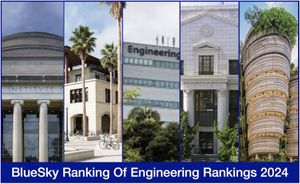For decades, the dream of utilizing nuclear fusion as both a clean energy source and propulsion method for spacecraft has hovered tantalizingly close yet remained frustratingly out of reach. This ambition, which once sounded more like science fiction than reality, is now inching closer to fruition, thanks largely to groundbreaking advancements in technology and science.
Nuclear fusion, the process of combining atomic nuclei to release energy, promises to provide virtually limitless power with minimal environmental impact. Unlike its counterpart, nuclear fission, which splits atoms to create energy—thus producing long-lived radioactive waste—fusion is seen as the cleaner, more sustainable option. Researchers are increasingly optimistic about achieving practical fusion energy, highlighting recent successes and innovations as significant indicators of progress.
One of the most talked-about advancements is the work being done by the National Ignition Facility (NIF), operated by the Lawrence Livermore National Laboratory. After years of experimentation, NIF achieved what scientists refer to as "ignition"—where the energy released by a fusion reaction surpasses the energy put in to initiate it. This milestone was celebrated as remarkable progress, showing what’s possible when both scientific rigor and advanced technology converge.
Meanwhile, private entities are also entering the fray, attempting to accelerate the pace of fusion development. Companies like Helion and TAE Technologies have been experimenting with different fusion approaches, such as the use of magnets and lasers to confine plasma, which is fundamental to the stability of fusion reactions. These startups, with their agile research methodologies and ambitions to bring fusion energy to the marketplace, add to the growing competition and urgency surrounding fusion energy advancement.
But the quest for sustainable energy doesn’t stop at terrestrial applications; the potential for fusion-powered spacecraft has captured the imagination of scientists and space enthusiasts alike. Traditional propulsion methods for space travel—such as chemical rockets—have their limitations, primarily due to their relatively low efficiency and fuel requirements. This is where fusion propulsion enters the conversation as it boasts the possibility of reaching incredible speeds, which could open the doors to interstellar travel.
Imagine powering spacecraft with the same process behind the sun’s energy production. A fusion-powered spacecraft could generate thrust by expelling high-speed particles produced during fusion reactions—enabling significant reductions in travel time to Mars and beyond. Instead of spending months coasting to the red planet, fusion propulsion could allow space missions to be accomplished within weeks. This has led to extensive discussions and research among astrophysicists who are eager to explore the other planets and celestial bodies within our solar system and beyond.
NASA's Innovative Advanced Concepts (NIAC) program is actively investigating these fusion propulsion possibilities. Their focus is mainly on conceptual designs and strategies for using fusion as both energy generation here on Earth and propulsion for deep space missions. They’ve laid out plans exploring how small fusion reactors could effectively work aboard spacecraft, potentially achieving speeds well over 10% the speed of light.
Yet with all the excitement surrounding fusion energy, challenges remain. Achieving and sustaining the extreme temperatures—millions of degrees Celsius—necessary for fusion is no small feat. Researchers need to maintain stability and confinement for the plasma to prevent its escape due to turbulent conditions. The field is vibrant with collaboration, competition, and innovation as teams around the globe tackle these complex challenges.
Funding issues have also surfaced, especially as the world grapples with energy affordability and climate change. Private investment has surged toward companies exploring fusion, but government support is still integral, particularly for larger projects like those carried out by national laboratories. Economic uncertainties may affect the pace of this research, prompting calls for governments to recognize the long-term benefits of investing in fusion technologies—not just for energy, but also for exploration and expansion of the human presence beyond Earth.
Fusion energy's potential applications go beyond just powering spacecraft or providing sustainable electricity on Earth. Some researchers believe fusion could revolutionize the way we think about global energy distribution, possibly leading to the development of efficient systems allowing energy to be harvested and sent across vast distances.
Each breakthrough brings us closer to this promising future. From nuclear fusion facilitating sustainable power on Earth to its role as potentially game-changing propulsion for spacecraft, these advancements ignite imagination and hope. The atmosphere is ripe for innovation, and as collaboration spreads across the scientific community, the pathway to achieving fusion as both energy source and propulsion method appears brighter than ever.



